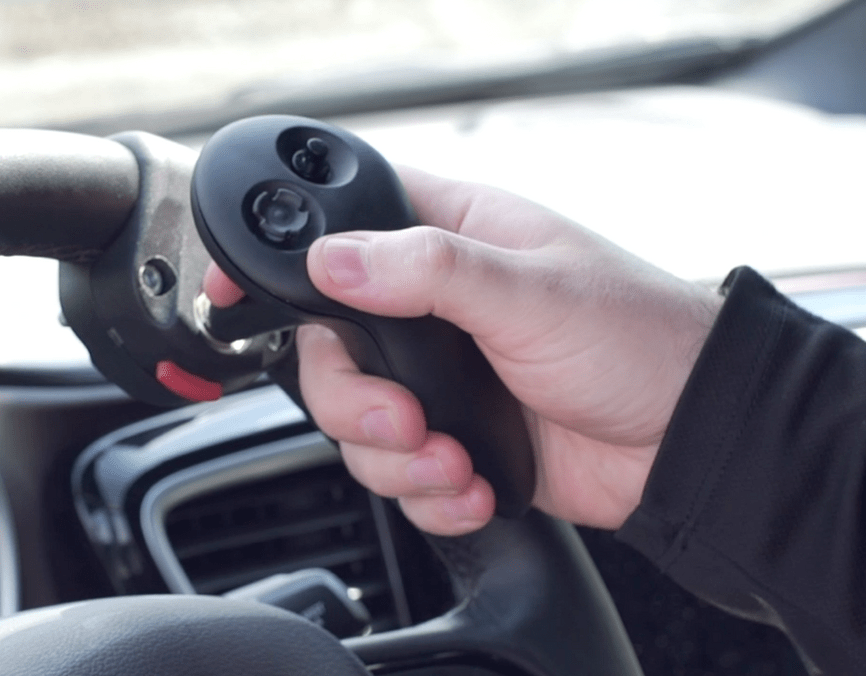
Driving to Independence is dedicated to empowering individuals with disabilities to achieve independence and experience the world from behind the wheel. Our mission is not just to enable people to drive but to ensure they do so safely, confidently, and independently. To embark on this journey, it’s crucial to understand the role of adaptive driving equipment, a fundamental key to unlocking newfound freedom. In this blog post, we delve into the significance of adaptive driving equipment, shedding light on how it can change lives and promote independence.
Adaptive Driving Equipment: What Is It?
Adaptive driving equipment, often referred to as mobility or assistive equipment, is a collection of specialized devices and modifications that transform a standard vehicle into a personalized, accessible mode of transportation. These adaptations cater to a wide range of disabilities, making it possible for individuals with limited mobility to operate a vehicle safely and efficiently.
The Benefits of Adaptive Driving Equipment
Increased Mobility: Perhaps the most evident benefit of adaptive equipment is the newfound mobility it provides. Individuals who may have relied on others or public transportation can now travel independently, making daily activities, social engagements, and employment opportunities more accessible.
Enhanced Safety: Adaptive equipment is meticulously designed with safety in mind. Features such as hand controls, pedal extensions, and steering aids enable individuals to operate a vehicle without compromising safety. Furthermore, specific adaptations, like transfer seats or wheelchair lifts, simplify entry and exit, reducing the risk of accidents.
Improved Quality of Life: The ability to drive independently boosts self-esteem, confidence, and overall quality of life. It expands horizons and fosters a sense of freedom, reducing feelings of isolation and dependency.
Types of Adaptive Equipment
Adaptive driving equipment is incredibly versatile, with options that cater to various needs. Here are some common types:
- Hand Controls: Hand controls allow individuals to control acceleration and braking using hand movements, replacing the need for foot pedals.
- Pedal Extensions: These extend the reach of pedals, ensuring individuals with limited leg mobility can operate a vehicle comfortably.
- Steering Aids: Steering aids modify the steering wheel, making it easier to handle for those with limited upper body strength or mobility.
- Transfer Seats: Transfer seats swivel and lower, simplifying entry and exit from the vehicle for those with mobility challenges.
- Wheelchair Lifts: Wheelchair lifts safely and efficiently load and unload a wheelchair and passenger into a vehicle.
Consulting and Installation
Selecting the right adaptive driving equipment requires a comprehensive assessment of an individual’s needs and the nature of their disability. At Driving to Independence, we offer professional consultation and installation services to ensure that adaptive equipment is tailored to each individual’s unique requirements. Our experts guide clients through the selection process, helping them make informed decisions that will enhance their independence.
Conclusion
Understanding adaptive driving equipment is pivotal in achieving independence and breaking down barriers. It’s about more than just operating a vehicle; it’s a gateway to living life on one’s terms. At Driving to Independence, we believe that everyone deserves the opportunity to experience the freedom that driving offers. Adaptive driving equipment is the key to making that dream a reality, and we are here to assist individuals every step of the way.
Empower yourself or a loved one with the independence that adaptive driving equipment can provide. Contact us to learn more about our comprehensive services and how we can help you gain the freedom to explore the world from behind the wheel. Independence is just a drive away.

Leave A Comment
You must be logged in to post a comment.